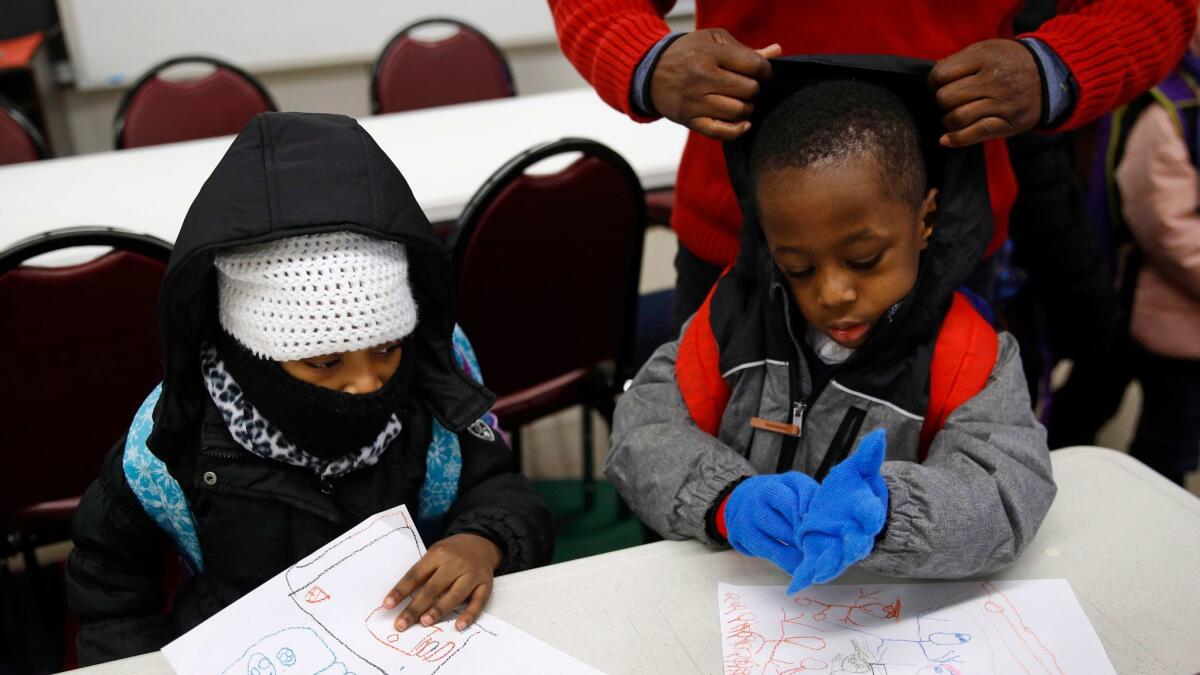Shoddy conditions persist at schools serving poor and minority students, civil rights panel says

- Share via
Reporting from WASHINGTON — Too often, low-income, black and Latino students end up in schools with crumbling walls, old textbooks and unqualified teachers, according to a report released Thursday by the U.S. Commission on Civil Rights.
The commission said inequities are caused by the fact that public schools are funded mostly with state and local tax dollars. More than 92% of funding comes from nonfederal sources, according to the Education Department.
The resulting imbalance renders “the education available to millions of American public school students profoundly unequal,” the commission said.
For instance, the authors said, 33% of high schools with high black and Latino enrollment offer a class in calculus, compared with 56% of high schools with low black and Latino student populations. Nationwide, 48% of schools offer the rigorous math course.
On average, school districts spend around $11,000 per student each year, but the highest-poverty districts receive an average of $1,200 less per child than the least-poor districts, while districts serving the largest numbers of minority students get about $2,000 less per child than those serving the fewest students of color, according the study.
The authors called on Congress to create incentives for states to adopt equitable funding systems, to ensure adequate funding for students with disabilities and to increase federal funding to supplement local dollars for school districts that are underfunded.
“The reality is that the United States does not offer the educational opportunity that is consistent with our ideals,” commission chair Catherine Lhamon told the Associated Press. “That’s appalling and it’s dangerous and all of us need for it to change.”
Education Department spokeswoman Liz Hill said the commission’s findings underscore the need for reform. Promoting charter schools, voucher programs and other forms of school choice are key goals of Education Secretary Betsy DeVos.
“This is further proof that too many children, simply because of where they live, are forced to attend schools that do not provide an equitable education,” Hill said in a statement. “Secretary DeVos has made clear her mission is to ensure every child has the opportunity to attend a school that offers an excellent education that meets their individual needs.”
Whether channeling more money to schools in underserved communities will help improve the quality of education is a subject of debate.
“Money matters. If you don’t have it, you cannot spend it,” said Bruce Baker, a professor of education at Rutgers University. Baker said that states should do a better job in raising education funding and in equalizing spending among school districts. He also called for a greater federal role in making sure that less affluent states that need additional education funding get it.
“Having federal money can help states that cannot help themselves, and federal pressure can encourage states to do the right thing to raise enough resources and put them where they are needed.”
But Eric Hanushek, a fellow at the Hoover Institution of Stanford University, disagrees.
“Money is not the secret recipe,” Hanushek said. “How much is spent on schools is not as important as how the money is spent.” For instance, he said, simply increasing the salaries of all teachers in a high-need school district won’t have as much of an impact as identifying high-performing teachers and increasing their salaries.
More to Read
Sign up for Essential California
The most important California stories and recommendations in your inbox every morning.
You may occasionally receive promotional content from the Los Angeles Times.










